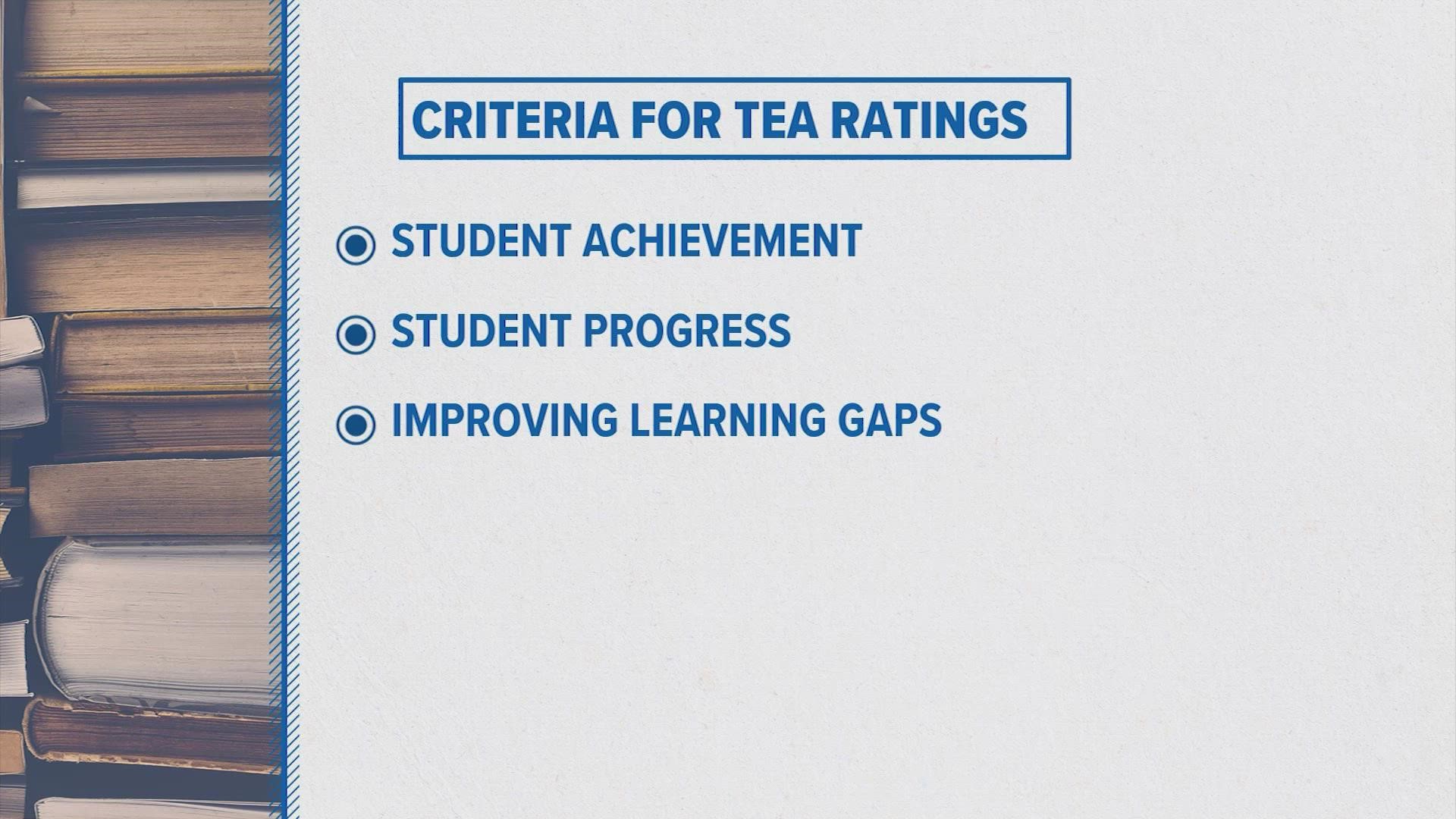SAN ANTONIO — The report cards are in.
After the pandemic put official campus and district-scoring on a hiatus in both 2020 and 2021, officials with the Texas Education Agency on Monday revealed new scores. That means that, for the first time in three years, parents can see the overall score given to their child's district, as well as a breakdown of individual scores based on STAAR testing, academic improvement and districts' efforts in minimizing socioeconomic gaps.
Ten districts in the San Antonio region – including Medina Valley, Boerne and Alamo Heights ISDs – scored high enough for an A rating from the TEA. Others have shown improvement from pre-pandemic levels, including Southside, Lytle and San Antonio ISDs. Bandera ISD headed in the opposite direction, dropping from an A to a D-grade over the last four years.
As for the local district which improved the most since 2018, that would be Uvalde CISD, which jumped to an overall score of 80 in 2022 after notching a 59 in 2018.
Below you can find an interactive graph charting each local district's progress since 2018 (highlight your district to single out its progress), according to TEA data from the last few years.
While some districts across the state received Ds and Fs for 2022, TEA leaders said those grades wouldn't count this year. As a result, a total of 42 Lone Star State districts, and 564 individual campuses, will receive a "Not rated" designation for scores below 70.
"Expectations do always matter," TEA Commissioner Mike Morath said on Monday. "We have to make sure we are setting reasonable goals and making adjustment given the conditions that we see."
Meanwhile, 33% of Texas districts and 28% of the state's 8,966 campuses received A-ratings.

